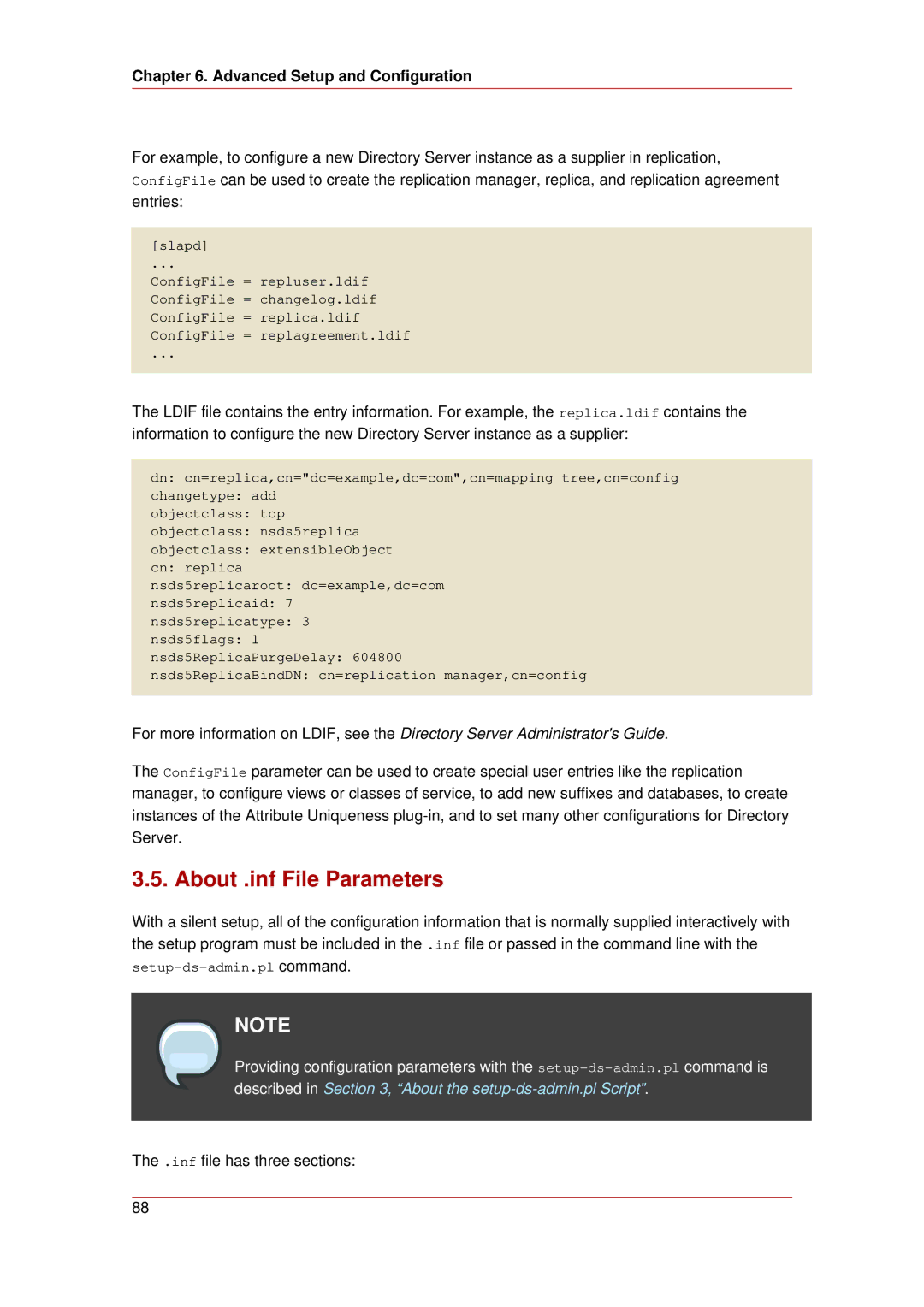
Chapter 6. Advanced Setup and Configuration
For example, to configure a new Directory Server instance as a supplier in replication, ConfigFile can be used to create the replication manager, replica, and replication agreement entries:
[slapd]
...
ConfigFile = repluser.ldif
ConfigFile = changelog.ldif
ConfigFile = replica.ldif
ConfigFile = replagreement.ldif
...
The LDIF file contains the entry information. For example, the replica.ldif contains the information to configure the new Directory Server instance as a supplier:
dn: cn=replica,cn="dc=example,dc=com",cn=mapping tree,cn=config
changetype: add
objectclass: top
objectclass: nsds5replica
objectclass: extensibleObject
cn: replica
nsds5replicaroot: dc=example,dc=com
nsds5replicaid: 7
nsds5replicatype: 3
nsds5flags: 1
nsds5ReplicaPurgeDelay: 604800
nsds5ReplicaBindDN: cn=replication manager,cn=config
For more information on LDIF, see the Directory Server Administrator's Guide.
The ConfigFile parameter can be used to create special user entries like the replication manager, to configure views or classes of service, to add new suffixes and databases, to create instances of the Attribute Uniqueness
3.5. About .inf File Parameters
With a silent setup, all of the configuration information that is normally supplied interactively with the setup program must be included in the .inf file or passed in the command line with the
NOTE
Providing configuration parameters with the
The .inf file has three sections:
88
